Sometimes one image just isn’t enough to communicate a story and this is when being able to create and curate a set of images can be a really powerful tool. If you did an Art subject in high school, this is what you were doing when you laid out those folio boards! As an Art teacher helping my students curate their photos for those boards was the bain of my existence but, it also left me with a love of creating beautiful sets of images!! Sets or sequences of images could include:
- A gallery or set of images on a website such a blogpost
- A set of images for display on the wall
- The way images sit next to each other in a photo album or photo book
- Any group of images shared in social media stories
- The way that images sit next to each other in your Instagram feed
- Print media that show images together, such a wall displays, magazine spreads etc
Here are my top tips for creating a strong series of images for digital media (website, blog post, social media stories). The examples I’ve used are from a recent blog post I created which documents our first week in isolation during the time of COVID-19 as we camped at my father in laws orchard. You can view the rest of this series by clicking here.
Start strong, finish strong. With an abundance of imagery online, I love to start a set of images with my strongest image to capture my viewer’s attention and I’ll usually save the second strongest image, for a memorable finish.In saying that, in the example above I haven’t stuck to this concept as I wanted to introduce the set with the idea of the place to set the context, but in general starting and finishing strong is a good rule of thumb!
Order. I don’t necessarily group images by chronological order. While I’ll loosely sequence them together based on when they were taken, I’ll also cluster sets by visual elements such as tone, quality of light, content, colour etc. For example, the images below are all from different days in different environments and lighting situations. However, the colour blue links them all.
Surprise your viewer. When I’m sharing work, I try not to be predictable with the way I sequence images together, I love adding-in surprises or elements of the unexpected to keep my viewer’s attention (this also makes it interesting for me too!). For example in the image on the right, the composition with the kids feet is a little unusual because of it’s orientation and breaks up the other bath images.
Context and details. When storytelling, add wide-angle (zoomed out) images for context and add in close up and details for interest or to break up repetitive shots like in the series below.
Here’s another example of transitioning the story, the two images below were taken on different days, the left image in a completely different context to the right, but they still make sense together, because Ruby is drawing on the left, and the close up on the right is the product of that day activities.
Culling. Less is more. Culling is the key to a good series, avoid repetition and remember you don’t need to tell every second of the story, our brains can cope with tenuous links and these are often the most interesting! After I blog or create an Instagram story I’ll often look back over it with a critical eye and end up pulling out a few images. Although I’m emotionally attached to many of my images, I know I can build a stronger set by keeping it short and sweet and to the point.
My top tips for creating a series of images to display on the wall
In the past when figuring out how I would place print images next to each other I’ve printed a bunch out at 6 x 4 size on plain paper from our home printer, cut them up and moved them around to get a feel for how they will look next to each other.
To make a set of images for print cohesive it helps if your images have some similar characteristics. For example, the images below were easy to create into a set fo six because of similar colours, the light is consistent throughout and so are the tones. This set taken on holiday with friends is almost 8 years old now and I still love it!
If you are selecting what images to put together, try looking for a visual element that links them, for example in the images below, all of the shots are linked through-line. If you are finding it hard to make images look good together, often converting them to black and white will help!
I already have a blog post devoted to creating a photo book and you can find that by clicking here.
I hope this blog post has been helpful to you! If you’d like to get more info like this straight to your email then you can grab the goodness by clicking here. ps. I’m offering a hugely discounted rate on my mentoring sessions at the moment and one of the key things I’ve worked with my clients on is image curation. If you’d like to know more about how to better curate your website, social media platforms or just how to create a beautiful photo book then send me an email – info@ruthgilmourphotographer.co.nz x










